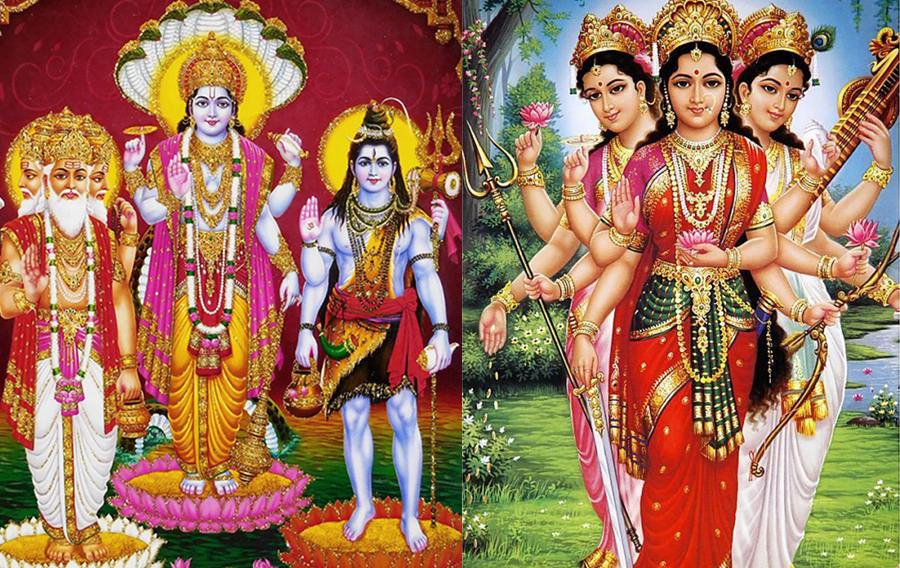Hinduism Gods & Goddesses
Hinduism Gods & Goddesses

Trinity forms of God in Hinduism
Hinduism believes in ONE God, either in the form of Supreme attributeless energy, or in various unique forms (having attributes). God takes forms (incarnations) according to the time and situation. The different forms (physical manifestations) of God have their own name and attributes, and they were taken for specific purposes. God has no name, no caste, and no gender in reality, but through own Maya (power) He manifests Himself in varied colors. God is the creator of the Universe. He is beyond past, present and future because He is the creator of the time itself. Therefore, everything that exists in the Universe, whether it be a planet, star, heaven, hell, creatures, demi-Gods, demons, etc., all have come into existence only because of Him. He is the creator of all. He is the controller of all. He is the composer of the Vedas and the cause behind its laws. It is because of Him that Vedic hymns work. He is the giver of all the powers to the angels and demons. And it is by His will only that their powers have an effect.
Since God is considered to be the creator of the Universe, He is also referred as the Mother of the Universe. And that Mother is worshipped in feminine form (although true nature of God is attributeless). In Hinduism, God (actually His manifestations) is portrayed and worshipped in various physiques like of a child, youth, adult and old forms. God has taken infinite masculine and feminine forms, and exists as so along with His own eternal Supreme form. It is said in the scriptures that God has taken 33 Koti (Supreme) manifestations (and extended into infinite sub-manifestations). But only the principal manifestations, along with some other forms, are worshipped in daily life. The principal masculine (Purusha) forms of God in Hinduism (also called Trideva) are Brahma, Vishnu and Shiva, which were taken for three different purposes of creation, preservation and destruction (of the Universe). And the principal feminine (Prakriti) forms of God (also called Tridevi) are Sarasvati, Lakshmi and Parvati respectively, which were taken to serve as the power to the previous masculine forms. These masculine and feminine forms are interconnected, so there is no difference between them. For example, there is no difference between God Vishnu and Goddess Lakshmi, as Goddess Lakshmi is the power of God Vishnu, and so on. Again, Shiva and Vishnu, etc are the manifestations of the same God, so there is no difference between them (in core) as well, but only in form, attributes, and purpose of that incarnation.
Among the Purusha forms, Brahma is considered to be Rajasic, Vishnu is considered Sattvic and Shiva is considered Tamasic. And among Prakriti forms, Sarasvati is considered Sattvic, Laxmi is considered Rajasic, and Parvati is considered Tamasic (however, in case of God, Rajasic and Tamasic nature cannot be taken as negative aspect; they are just inherited to fulfil specific purpose). Any form can be worshipped with any kinds of desire or with pure love (devotion).
These different forms have again subdivided into many other forms. And these subdivisions are considered to be the descendants (and avataras or incarnations) of the main forms. For example, incarnations like Rama, Krishna, Hanuman, Durga, Mahakali etc, descendants like Ganesha, Kumara, Narada, etc, and demiGods like Sun, Air, Water, Indra, etc. Among the descendants, Ganesha is the primary one, and among the demiGods, Sun.





Comments
Post a Comment